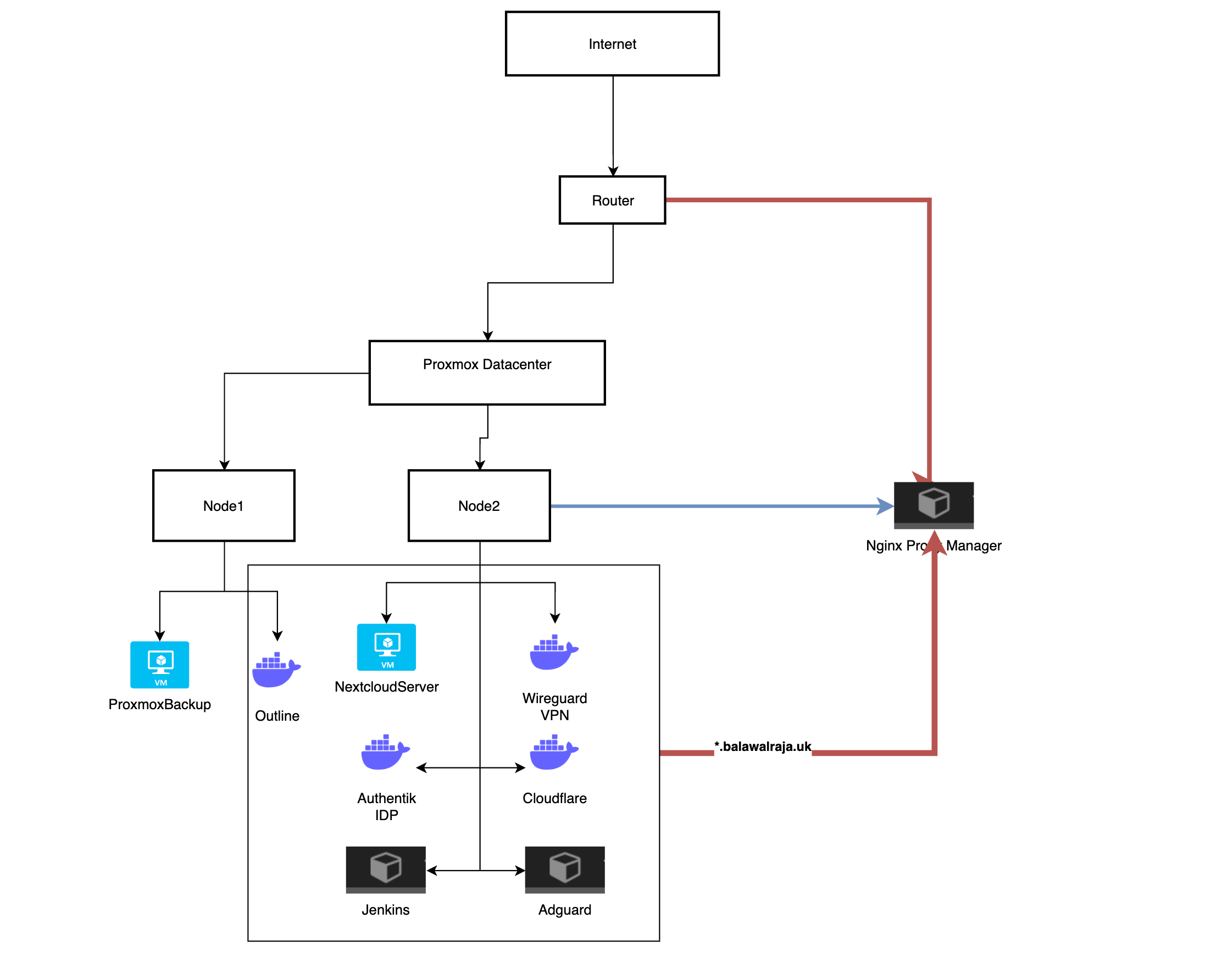My Home Lab Infrastructure
A comprehensive self-hosted infrastructure for learning, development, and production services
Network Architecture
Below is the complete network topology of my home lab infrastructure:

Infrastructure Overview
Hardware Foundation
- Budget-friendly setup using repurposed hardware
- Old gaming laptop as primary node
- Mac mini for additional compute
- 1TB HDD for local backup storage
Network Infrastructure
- Router with proper forwarding rules
- Nginx Proxy Manager for SSL termination
- *.balawalraja.uk domain management
- Cloudflare integration for DNS and security
Proxmox Datacenter
The core of my infrastructure runs on Proxmox VE, providing enterprise-grade virtualization capabilities.
Node 1
Proxmox Backup Server
Centralized backup solution with deduplication and encryption
Outline Wiki
Team knowledge base and documentation platform
Node 2
Nextcloud Server
Self-hosted cloud storage and collaboration platform
Wireguard VPN
Secure remote access to internal network
Authentik IDP
Identity provider with SSO and OAuth2 support
Cloudflare Integration
DNS management and DDoS protection
Jenkins CI/CD
Automated build and deployment pipelines
AdGuard DNS
Network-wide ad blocking and DNS filtering
Security & Access Control
Nginx Proxy Manager
Reverse proxy with automatic SSL certificate management via Let's Encrypt
Authentik IDP
Centralized authentication with OAuth2, SAML, and LDAP support for SSO across all services
VPN Access
Wireguard VPN for secure remote access to internal services and management interfaces
Backup & Disaster Recovery
Automated Backup Strategy
- Daily Scheduled Backups: Automated at 00:00 daily
- Proxmox Backup Server: Deduplication and incremental backups
- Local HDD Backup: 1TB local storage for redundancy
- Data Integrity: Regular backup verification and testing
Technical Challenges & Solutions
Challenges Overcome
- Migration from Raspberry Pi with Dynamic DNS
- Ensuring data security during transitions
- Managing server performance on limited hardware
- Maintaining high availability and uptime
Solutions Implemented
- Professional domain with SSL certificates
- Containerized services for better resource management
- Automated monitoring and alerting systems
- Comprehensive backup and recovery procedures
Learning Outcome: This hands-on experience, combined with professional cloud infrastructure work at ZAVA, has significantly enhanced my technical skills in system administration, network management, and DevOps practices.